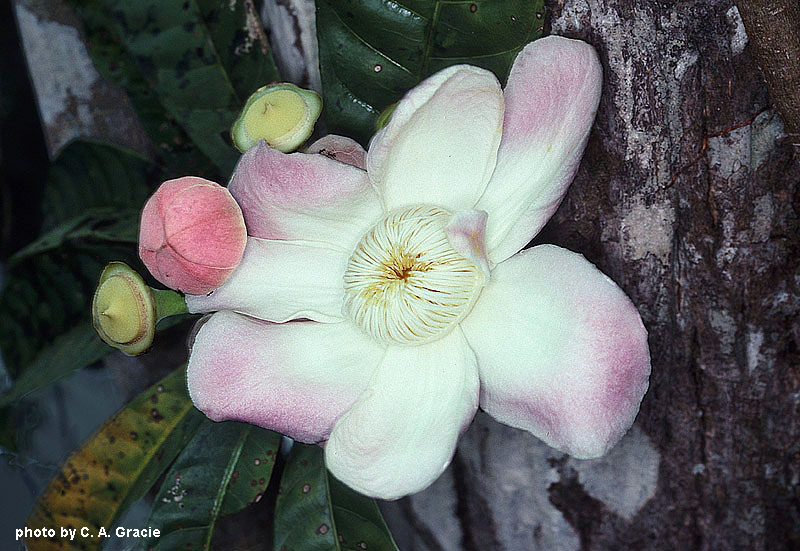Botanical Names for Beginners
Posted in Science on May 28 2013, by Scott Mori
Scott A. Mori is the Nathaniel Lord Britton Curator of Botany at the New York Botanical Garden. His research interests are the ecology, classification, and conservation of tropical rain forest trees. His most recent book is Tropical Plant Collecting: From the Field to the Internet.

Understanding the botanical naming system can be a difficult task for beginners—classification hierarchy, plant name changes, and name selection all have to be taken into account. But rather than tackle this important botanical puzzle all at once, we instead begin with the most basic piece: species names. The rules discussed here apply not just to the Brazil nut family, but to every plant found in all the world’s habitats, and have much in common with zoological nomenclature.
A species name consists of two parts—Gustavia augusta, for example. The first part of the name is the genus and the second is the species epithet, each of which is either in Latin or Latinized words from other languages, especially Greek. Known as binomial nomenclature, Carl Linnaeus is considered the first to use this system, which he employed in his Species Plantarum—long regarded as the starting point for plant nomenclature. As such, a name used in Species Plantarum has priority over other names published for the same species at a later date.
Gustavia augusta L. was published in a later, 1775 edition of Species Plantarum, but afterward the same species was published as Gustavia antillana Miers in 1874. In this case, Gustavia augusta is considered the correct name, and G. antillana is accepted as a synonym.
The abbreviation or full name following the species epithet (L. and Miers for example) represents the botanists who published the name. In G. augusta L., the “L.” stands for Carolus Linnaeus; “Miers” refers to John Miers, who described minute differences based on characteristics that most botanists consider to be within the range of species variation. Much of this variation, such as the presence of trichomes in young plants and their absence in adult plants, does not merit the recognition of one species from another. Because of Miers’ failure to accept variation among species, his “species” are often regarded by other botanists as synonyms of accepted species names.

There are several helpful references available to the beginning botanist. Perhaps the most useful to both novice and professional botanists is the International Plant Names Index, it provides a treasure trove of information about the names of plants—along with the standardized names of botanists who have published species names. Linnaeus is such an important figure in plant classification that his standardized name has been reduced to a single letter; nevertheless, anyone who understands plant classification immediately understands that Linnaeus was the author of any species name followed by an “L.”
With the establishment of standardized names, it is now impossible to confuse the name of a botanist who publishes species with another botanist who also publishes species. These are just a few of the components of species names. Next week we will dig into one of the most frustrating aspects of botanical classification: the frequent changes in botanical names.

